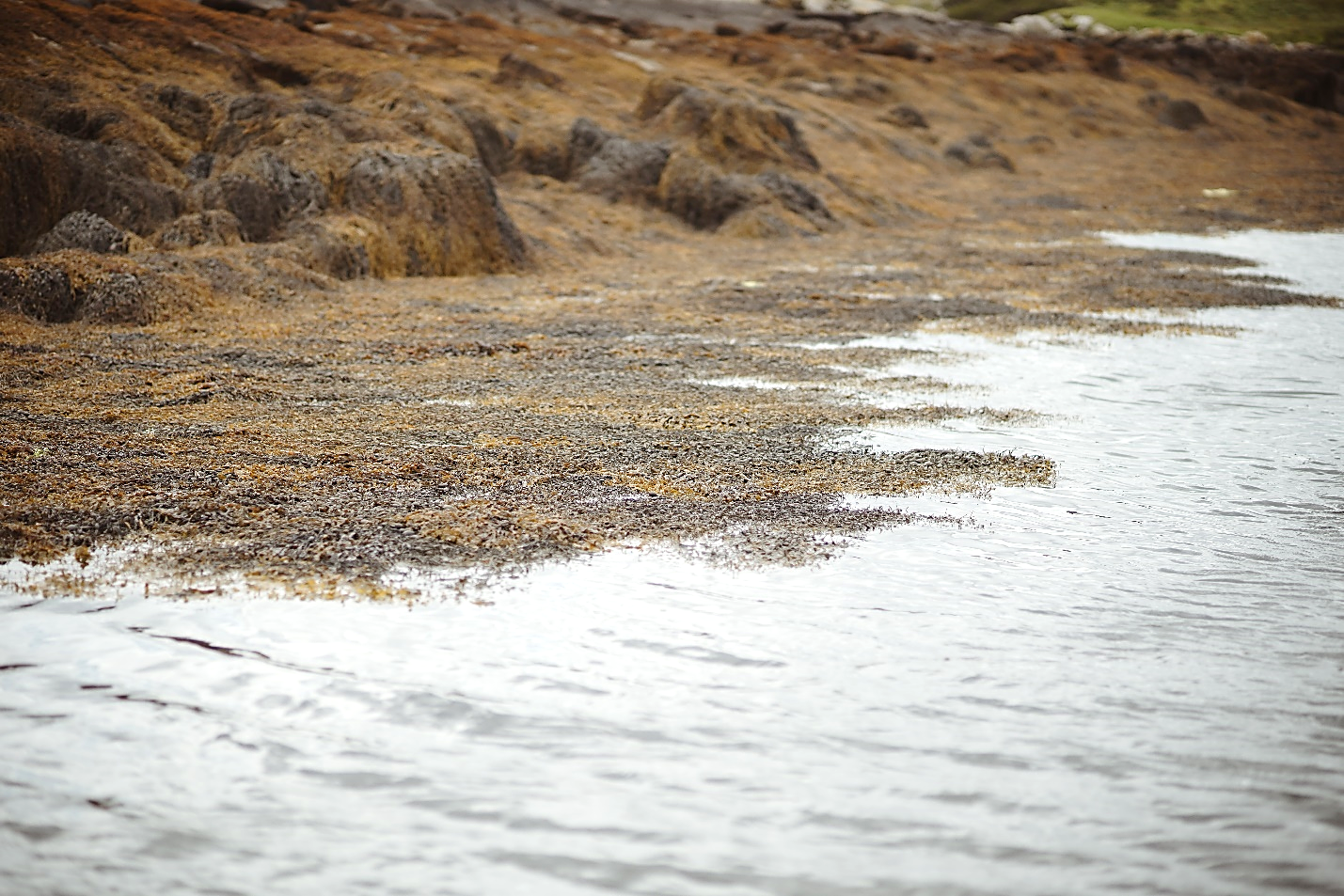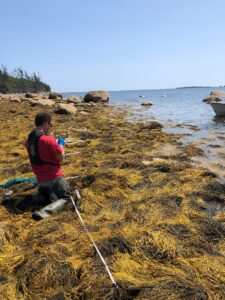News and Blog

Why the World Is Rethinking How Ascophyllum nodosum Grows
If you’ve ever taken a long walk along a North Atlantic shore, you might have seen the seaweed at the center of our success: Ascophyllum nodosum. Its olive-brown fronds, covering the shore along the coast, are a memorable sight to behold. Each frond can range from 0.5 to 2 meters. Oblong formations called air bladders are found at intervals on each shoot and serve an invaluable purpose.
In the cold and briny waters of the Atlantic, these air bladders float the macroalgae towards the surface, helping seaweed fronds reach the sunlight they need to grow. Beyond their biological function, air bladders have been used by biologists to estimate the relative age of each shoot of Ascophyllum nodosum. One air bladder is produced every year at the growing tip, so biologists can estimate the age of the seaweed by counting the number of air bladders along each shoot. Since measuring seaweed growth in the wild has historically been a challenge, many studies have focused on either changes to the standing seaweed stock or recording how shoots grew outward from the tip.
For over 50 years, the general assumption has been that most (if not all) growth in Ascophyllum occurs at the tip of each shoot, above the last air bladder formed. However, years of research in the field by our Research Science team show assumptions about the growth and productivity of this incredible brown seaweed may be greatly underestimated. Now, members of the Acadian Seaplants team from both sides of the Atlantic have published their work on seaweed growth rates, sharing their breakthrough research with the world.
What does it mean for ecosystems, sustainable harvesting, and the seaweed itself? Here’s what you need to know.
25 Sites. Two Continents. One Big Study
The North Atlantic is a vast place. Even on the same continent, growing conditions can range in nutrient availability, salt levels, water flow and water temperatures. For that reason, one of the long-running challenges of measuring seaweed growth rates has been getting a diverse enough sampling to cover Ascophyllum nodosum as a species. Our operations across multiple countries and coastlines gave the Acadian Seaplants team a major advantage in getting to the bottom of this question.

With a clear goal, our Resource Science team set about selecting 25 different sites across the North Atlantic for our research. From Eastern Canada and coastal Maine to Ireland’s Connemara and the Outer Hebrides in Scotland, we chose regions we know well, using knowledge gained from sustainable monitoring and harvesting to take measurements. Then, our Resource Scientists began the hands-on work of gathering data.
Measuring seaweed is all about timing. In the winter, it can be difficult to navigate the frigid waters to say nothing of finding Ascophyllum not covered by a layer of ice! Even during growing seasons of the spring and summer, our team needs to time every expedition to the intertidal zones just right. We arrived during the four-hour low tide window during which we could trek into the seaweed beds, set up our quadrats and collect our samples. It’s time-consuming work but it’s essential for accurate data.
From there, our Resource Scientists returned to the lab. We selected the longest unbroken shoot in each of our samples. We recorded its length and number of air bladders and measured both the length and the weight of each yearly segment, the section of shoot between successive yearly air bladders.
What did we learn? Some of the assumptions about Ascophyllum nodosum’s productivity and growth differ widely from what we measured. For starters, growth in Ascophyllum is not limited to the growing tips. Segments can increase in length for one to three years and accumulate mass for one to five years at most sites. Compared to the growth during the first year after a segment is produced, segments can triple their mass and double their length over that time period.
Even the air bladders themselves can increase in size for at least four years. All this means that using growth only above the last air bladder underestimates the annual productivity of the whole frond. With this new data, seaweed harvesters, governments and conservationists need to rethink several key practices and policies.
What This Means for the Harvest
Keeping a healthy seaweed population is of the utmost importance to businesses and communities along the North Atlantic. The ability to sustainably harvest Ascophyllum nodosum has created prosperity for coastal communities as well as bring value-added products to plants, animals and people.
Of course, governmental agencies, which have a stake in protecting seaweed for future generations, will take a conservative approach to prevent overharvesting. For example, the maximum harvesting rate in New Brunswick is set as 17% of the standing stock, which is determined by the New Brunswick Department of Agriculture, Aquaculture and Fisheries with the intention of preserving a precious natural resource.
If those rates are set with old assumptions about how quickly seaweed regrows after harvesting, that means there’s far more biomass available than agencies estimate. What if the harvesting rates could be safely expanded without negatively impacting the resource?
Experimental harvesting plots in New Brunswick, Maine, and Scotland, where seaweed was harvested at 50%, show a rapid recovery of pre-harvest biomass in one to two years. If Ascophyllum nodosum only grew back from the apex of the frond, the seaweed stock’s rebound would take longer. Our study helps explain the rapid recovery rate and the limited long-term impact on the height of seaweed canopies even at a 25% harvest rate.
What That Means for the Coastal Carbon Cycle
Beds of macroalgae play a major role in the coastal carbon cycle, pulling CO2 from the ocean, reducing ocean acidification. In fact, the ocean’s net primary productivity (NPP), which is the amount of carbon retained in an ecosystem, could be even greater than current estimates if Ascophyllum nodosum is more prolific than previously thought. Though environmental scientists would need to further investigate this hypothesis, the potential for enhanced carbon sequestration could impact climate change policies in substantial ways.
Want to learn more about our findings on the seaweed growth rate of Ascophyllum nodosum? Take a look at our study to see the potential of these breakthroughs.
Read our research
Related Articles
Pure Science, Hard Work & a Bit of Luck: How We Pioneered Land-Based Seaweed Cultivation
How Dr. Bryan Morse and Our Resource Science Team Embody Seaweed Conservation
